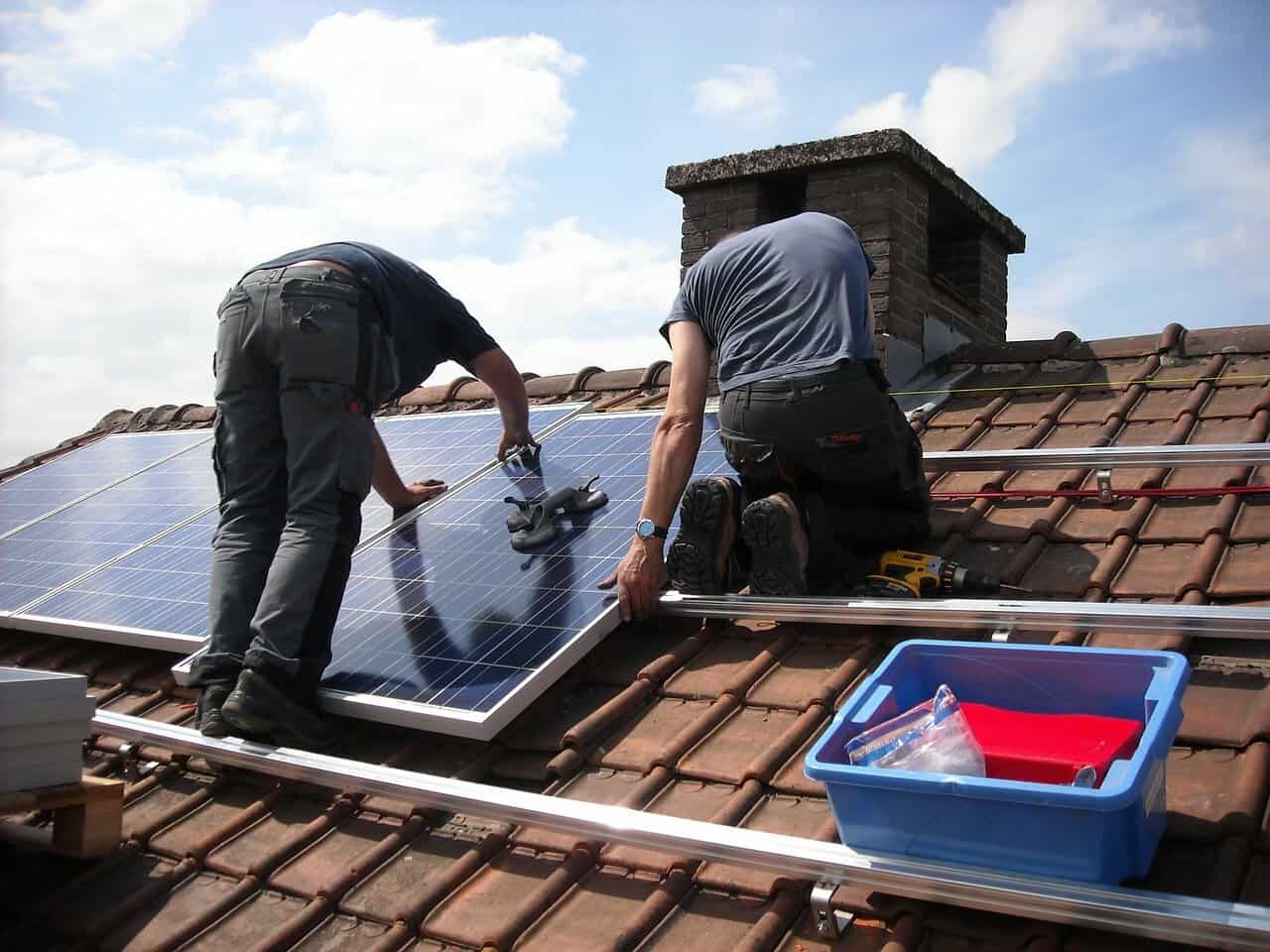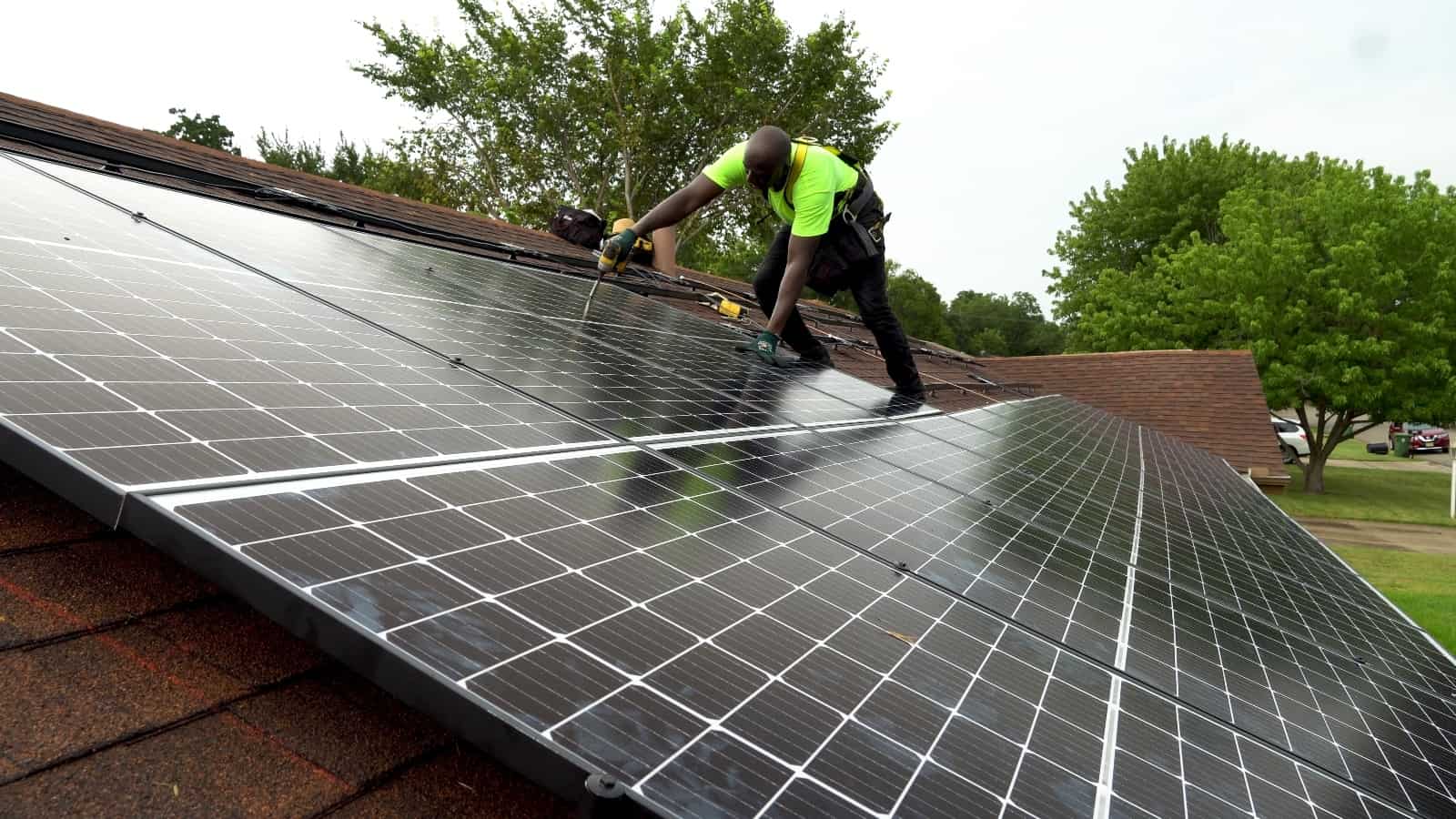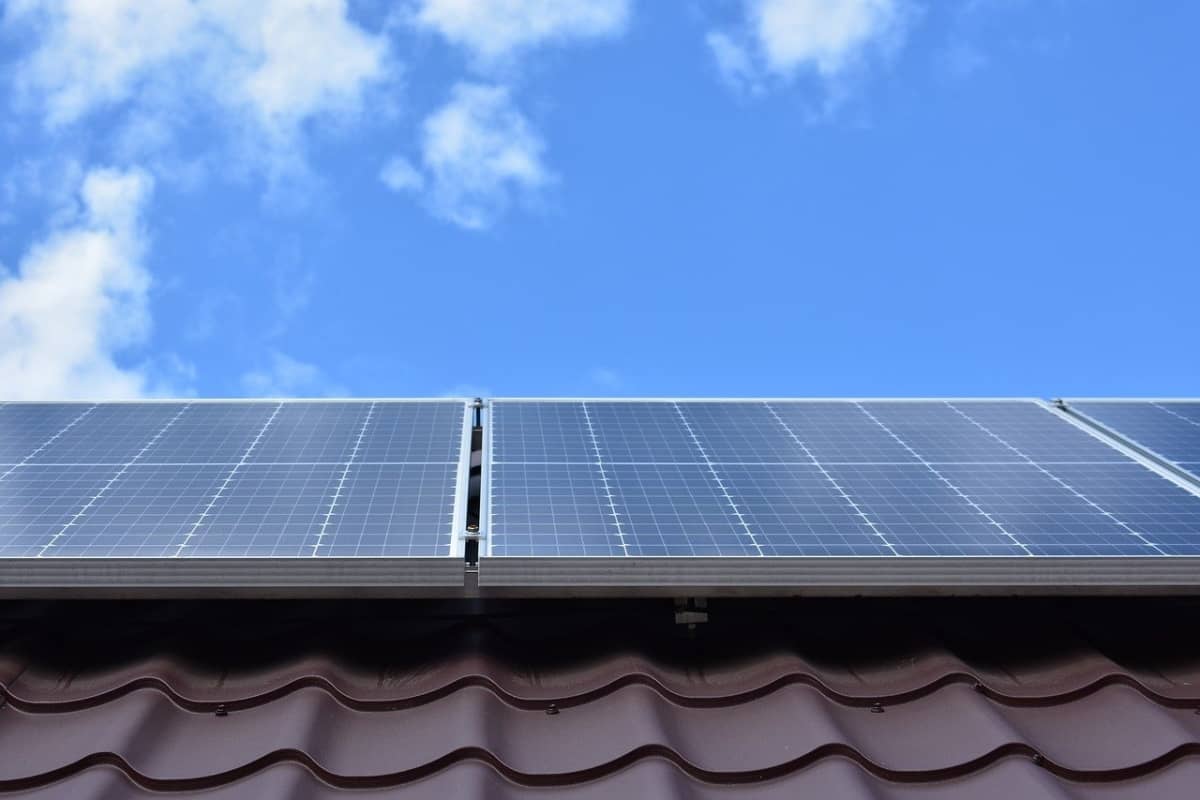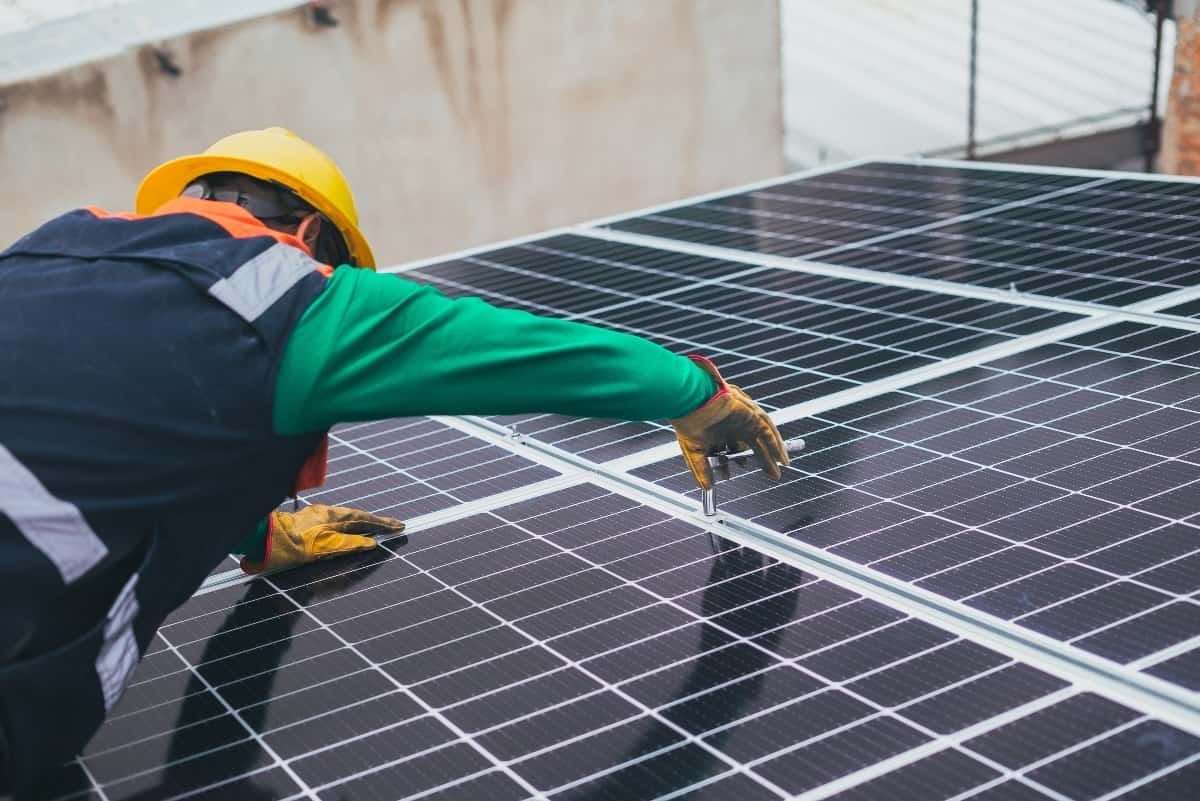Are you worried about solar power installation cost? This article provides a cost breakdown for labor and equipment, information on solar tax credits and how you can begin the process of solar power implementation at your home.
Solar Power Installation Cost Breakdown
Solar power installation cost average less than $25,000 and that price is falling. Typically, homeowners pay between $17,000 and $32,000. So, depending on where you live, you can expect to pay between $2.50 to $3.50 ($2.60 in Texas) per watt for solar systems ranging between 3-10kW.
The federal investment tax credit (ITC) is valid until the end of 2021 and allows you to deduct 22% of solar installation expenses from your taxes. Until the end of 2021, you can deduct 22% of the installation costs with the federal investment tax credit (ITC). Plus, the program extended through the end of 2022 may include even higher savings!
The breakdown of the costs includes hard and soft costs. Hard costs include the solar power installation costs or the labor and equipment to get your system running. It includes the panels, inverters, mounting racks and a battery for energy storage. Surprisingly, solar panels only account for up to 30% of your total costs.
Adding a solar inverter and electrical equipment can add another 20% (10% each). Soft costs include permits, connection fees, labor, system design and related costs, which can account for up to 45% of your total cost.
Although every jurisdiction has its own rules, the permit process typically takes a couple of weeks and there is some red tape to cut through before you can install and use your solar panels. However, in general, states are trying to make it easier to install solar panels that can power your home and potentially give back to the energy grid for your municipality.

Average Installation Time Frame
Did you know you could go solar with ONIT and get a two-week installation with a 30-year warranty? Check out our website for more information on this exciting offer. Solar panels help you control your energy bill and you can go solar for less thanks to our easy finance options.
Typically, solar panel installations can take several weeks. This is due in part to the red tape you have to go through in order to gain permission to go solar. Here’s a high-level view of the process.
Site Assessment
During the site assessment, solar professionals evaluate your home. We look at the direction of your roof, shade on the property and other factors to determine where to place the panels. During the site visit, the inspector will verify the measurements and prepare the beginning of a design plan and estimate. It may take up to two weeks to contact the solar professional and schedule the site assessment.
This is when you finalize a design plan and agree on an estimate. You can also apply for financing and work out your payment plan.
Design Approval
So, you now have a site evaluation and design prepared by an expert. Our representative will make a few adjustments, provide a quote and await your final approval. This process can go relatively quickly, or it may take a few weeks depending on the timing and whether anyone drops the ball in between.
Permitting
Installing a solar panel system involves modifications to your home. Therefore, before we start construction, we apply for all necessary permits. Depending on how quickly your jurisdiction moves this process along, it could take two to eight weeks.
Installation and Inspection
Once your permit comes, ONIT can typically install your system within two to five days. All the parts have been ordered and our team shows up on time to help shorten this timeline even further. We want to get your solar panels working so that you can begin saving money on your electricity and helping the environment.
The last steps include scheduling a city or county inspection and connecting your solar panel system to the local utility authority.
Discover Energy Audits with Solar Energy and ONIT Home
Try our Free Energy Audit to make sure your home is performing at optimum energy efficiency. We’ll inspect every nook and cranny of your home to make sure it’s best serving your needs. We’ll also give you tips on lowering your energy bills, conserving energy, and creating a more efficient space. To learn more about how ONIT Home can help you maintain a top performing home, visit ONIT’s energy audit page to get started!
Benefits of Going With a Professional Installation Service, Rather Than a DIY Install
When you work with a professional installation company, you can help keep the timeline as short as possible. Here are other advantages to using professionals rather than trying to install the solar panels on your own.
Safety
Working with a professional solar panel installer is much safer than going in alone. Solar panel installations require electrical work completed by a qualified and licensed electrician. If you attempt to do the work yourself, you could end up falling off the ladder, suffering electrocution or damaging the panels or your electrical cabling.
Experience and Training
Solar power installation requires special tools to avoid damaging the panels and to attach them to the roof. Therefore, in order to properly install your solar panels, you need the help of a professional with the right experience and tools.
Experienced technicians can install your solar panels quickly and without incident because they have received the necessary training to do so. Therefore, it’s better to wait for the professionals to handle your solar panels. That way, you can realize the benefits of energy self-sufficiency and lower electric bills as quickly as possible.
Solar Panel Warranty Coverage Fine Print
It’s a good idea to review your warranty coverage. The fine print includes how your panels are installed. For example, working with a reputable solar company such as ONIT will yield you better results and help you maintain the requirements for your warranty. Most solar companies do not offer warranties on DIY installations.
Increase Your Property Value
You can justify some solar power installation costs by considering how it impacts the value of your home. Many buyers want homes with alternative energy solutions such as solar panels. We recommend working with ONIT’s professional team of installers to ensure that your solar system lasts for many years for your family and future home buyers.

Federal Tax Credits Reduce Your Costs
The federal government offers incentives for homeowners who install solar panels. Therefore, you can reduce solar panel installation costs. This comes in the form of a tax credit and you can deduct a portion of what you pay for your solar photovoltaic (PV) system. In order to use this tax credit, you have to apply the same year you install your system. It also must be placed in service (fully installed and generating electricity).
In December 2020, the federal solar investment tax credit. If you install a system between 2020 and 2022, you can deduct 26% of the costs. A recent extension has increased that percentage to 26% for homes installed in 2023. Additionally, there is no maximum amount for what you can deduct. However, the current tax credit expires in 2024.
Example of ITC Savings
Here is an example of how to calculate total solar panel installation costs. In the US, the average homeowner pays $2.96 per watt. Many homeowners choose 5kw systems to power their home adequately. So, 5,000 watts times $2.96 equals an average cost of $14,800.
Now apply the tax credit from the previous section. In 2021, you save 26% or $3,848. This brings the cost of your system to $10,952. Plus, your state may have additional discount and rebate programs related to solar energy.
Is the Installation Price Different if You Lease, Rather Than Buy?
Renting solar panels may cost you less money up front. However, you give up a lot, including ownership of the solar panels. Therefore, it’s important to consider your financial goals. If you want to maximize the equity solar panels lend to your property value, buying is the better option. You also cannot take advantage of state or federal tax credits when you rent solar panels.
Renting solar panels only provides a temporary solution. Consider the market value of your home and buy solar panels outright for the best return on your investment.
Differences in Costs Between States?
Solar panel installation cost varies by state. According to Consumer Affairs, the average solar panel installation cost in TX as $2.60 per watt. This compares favorably with surrounding states. Louisiana has an average cost per watt of 2.38 while Arizona’s cost per watt is 2.67. Oklahoma has an average charge per watt of 2.62 while Arkansas’s average is 2.63.
Visit the Solar Energy Industries Association website to find state and local incentives in your area that further defray solar panel installation cost.

ONIT Home Solar Panel Installation
When it comes to solar power installation cost, you should look to a company that offers great payment plans. ONIT Home is here for all your home services needs, from water filtration, home security, insurance, and solar, we’re ONIT.
To speak with a live representative, give us a call today at 1-833-433-0331 or visit us online for more information.



